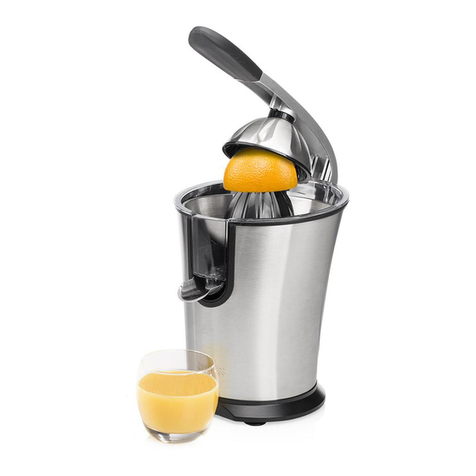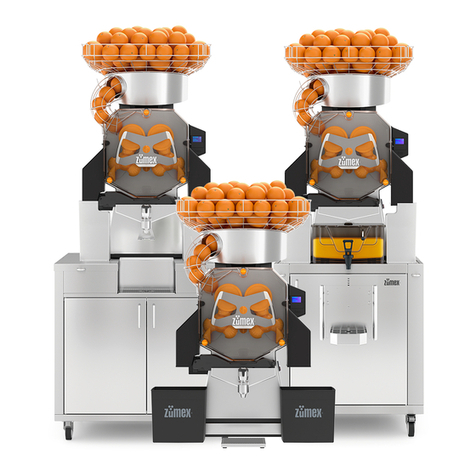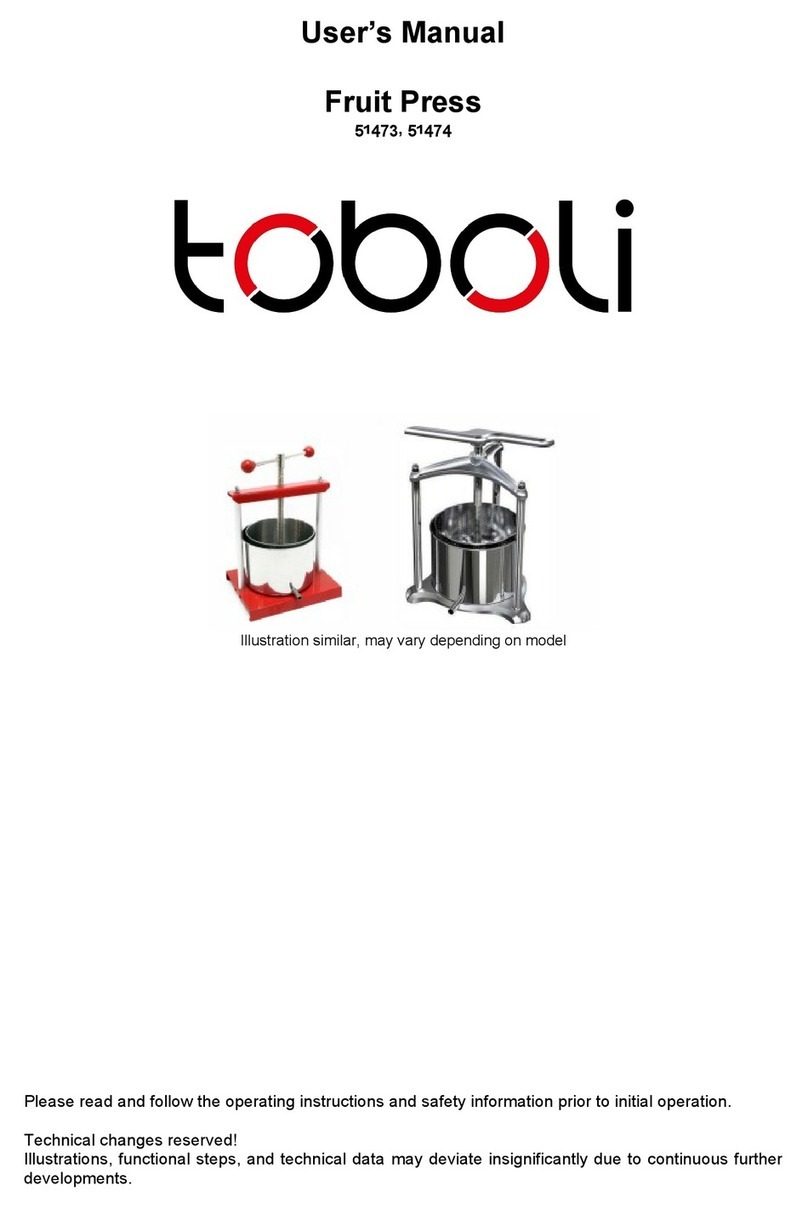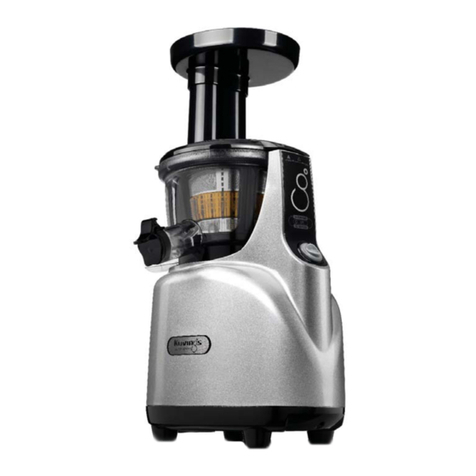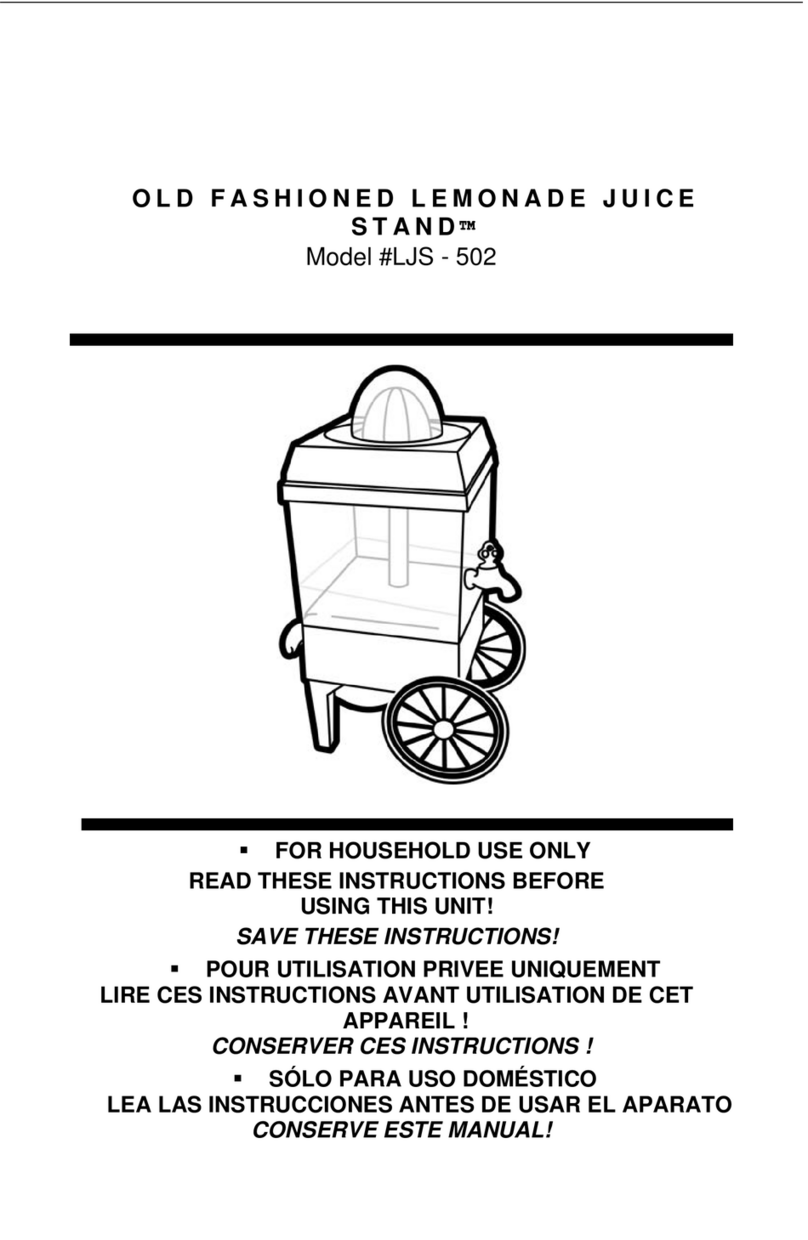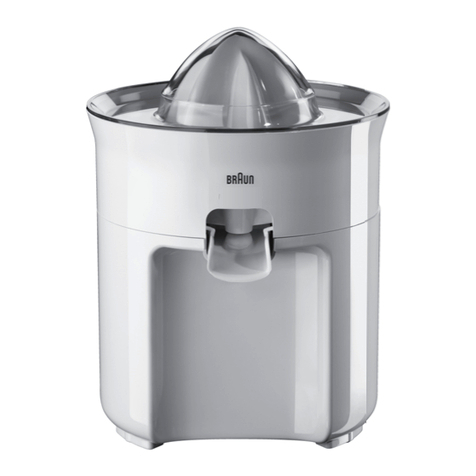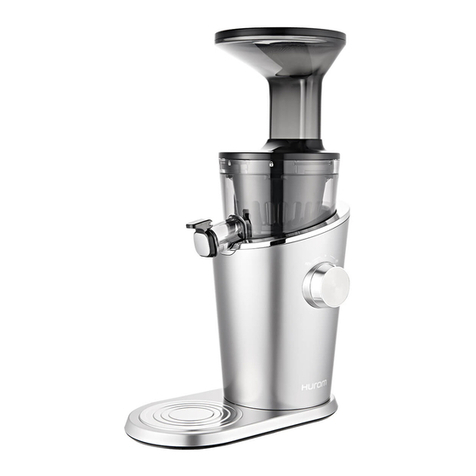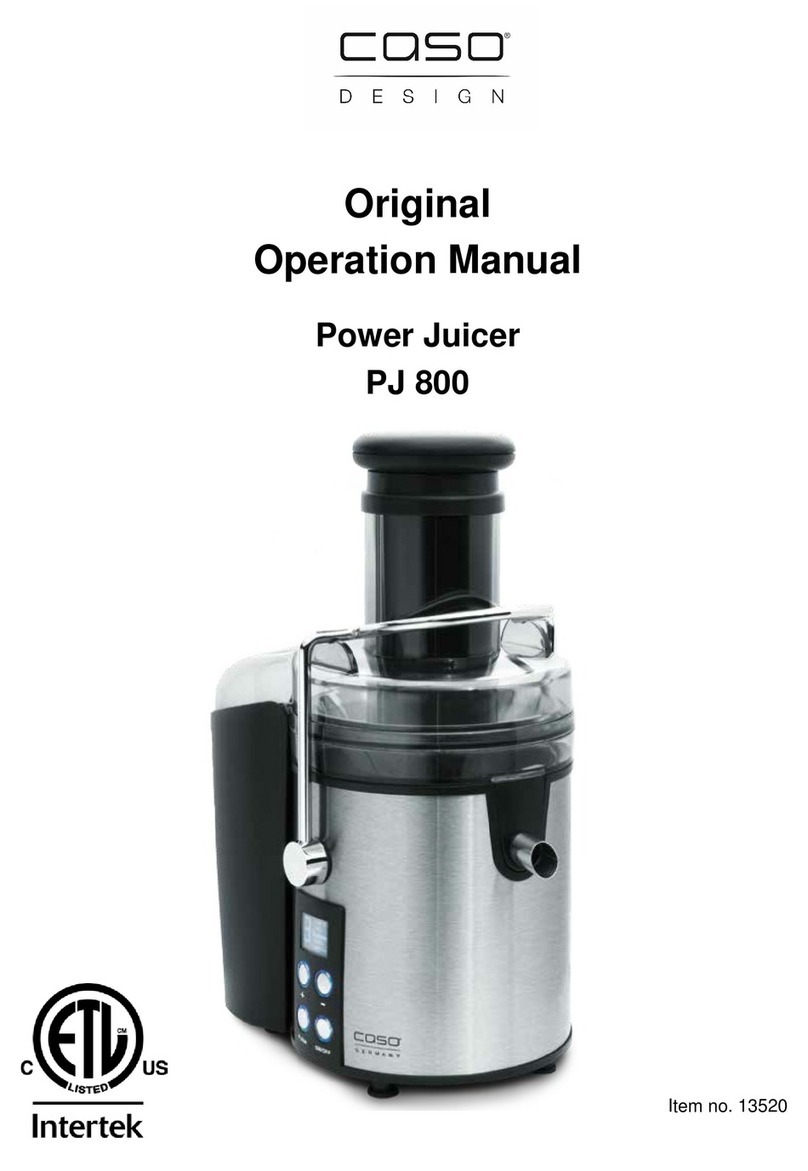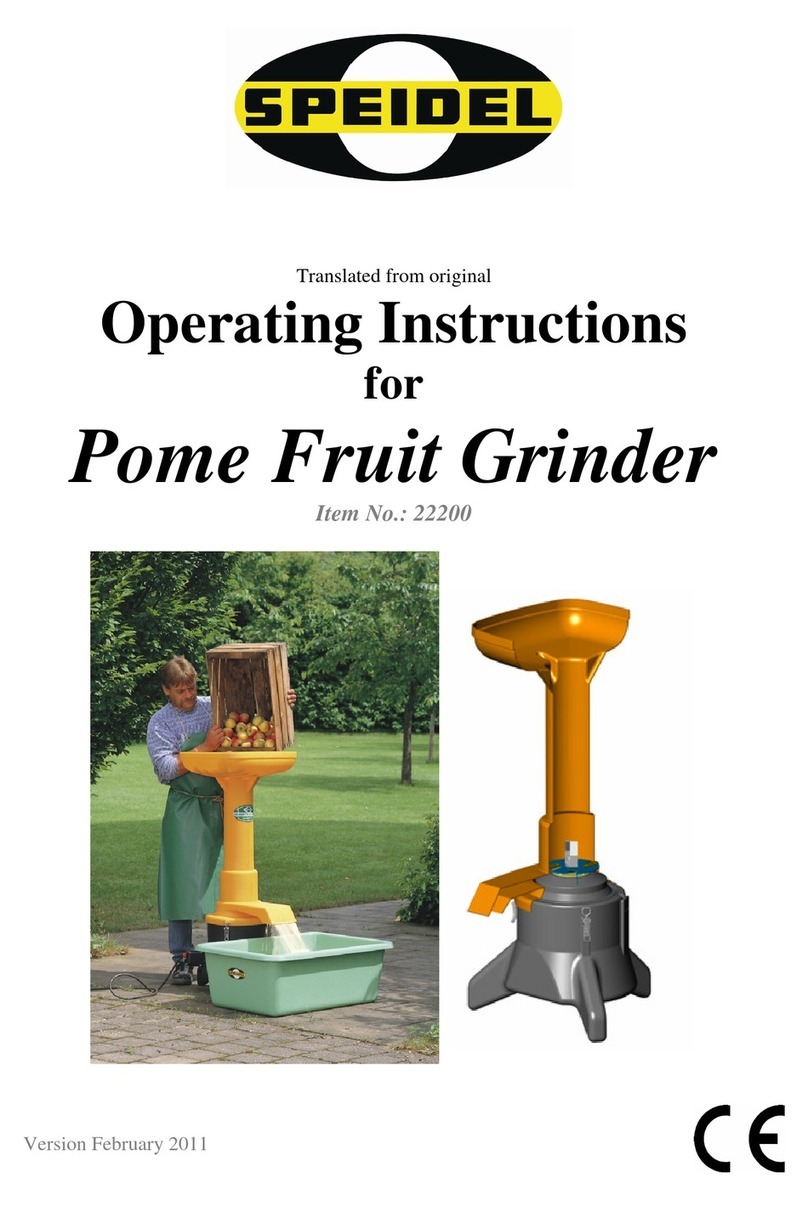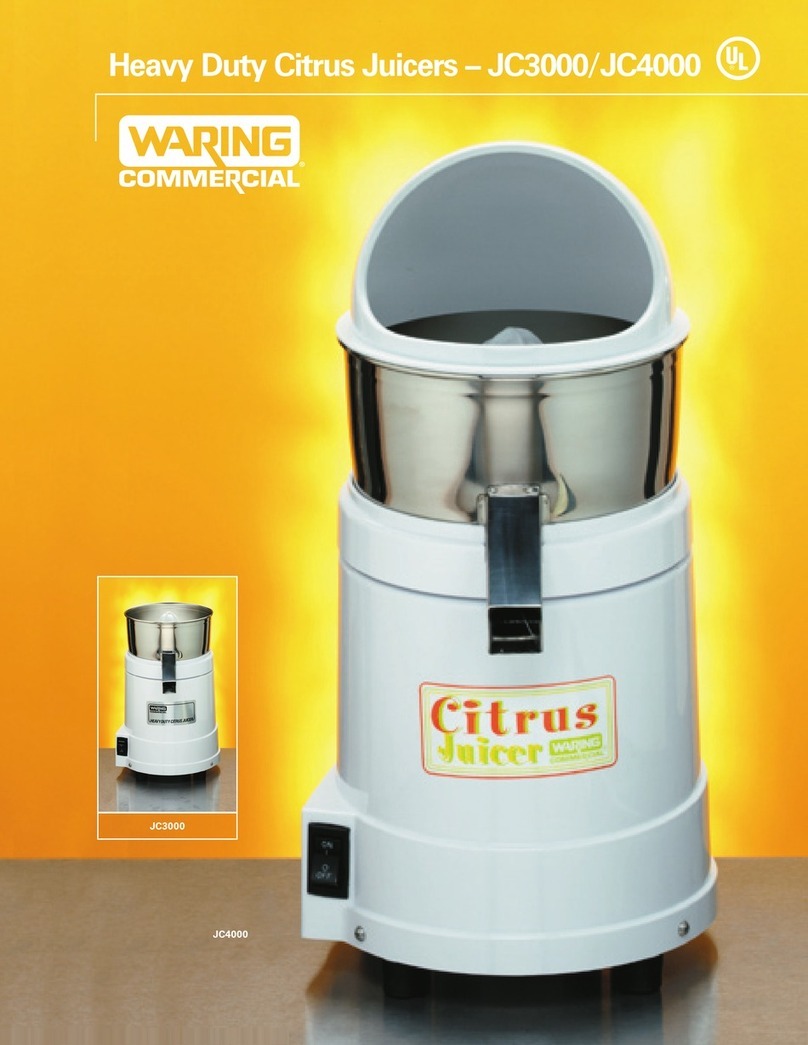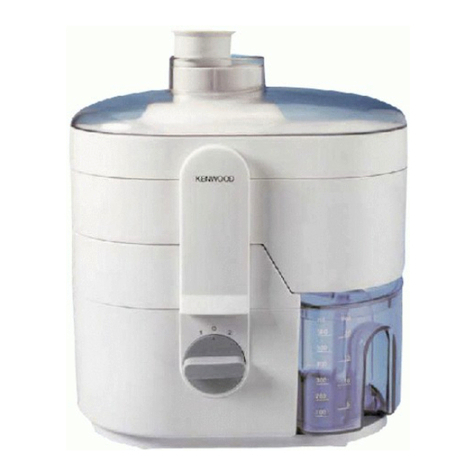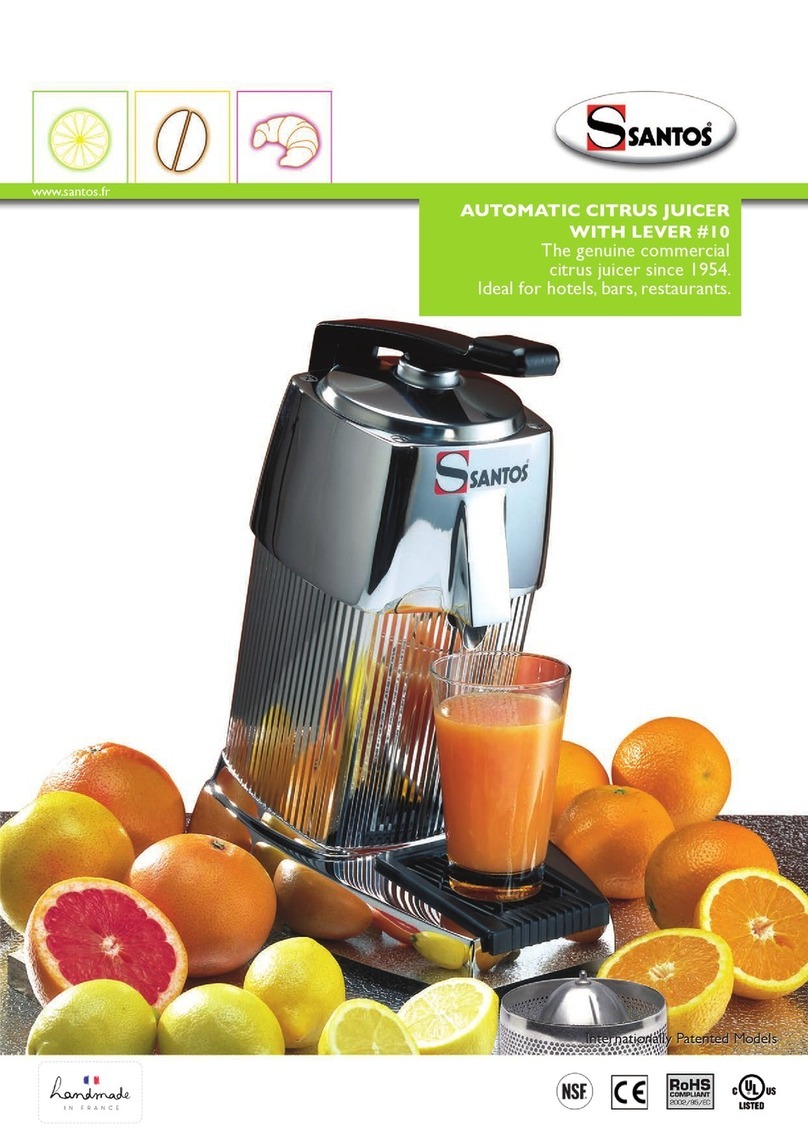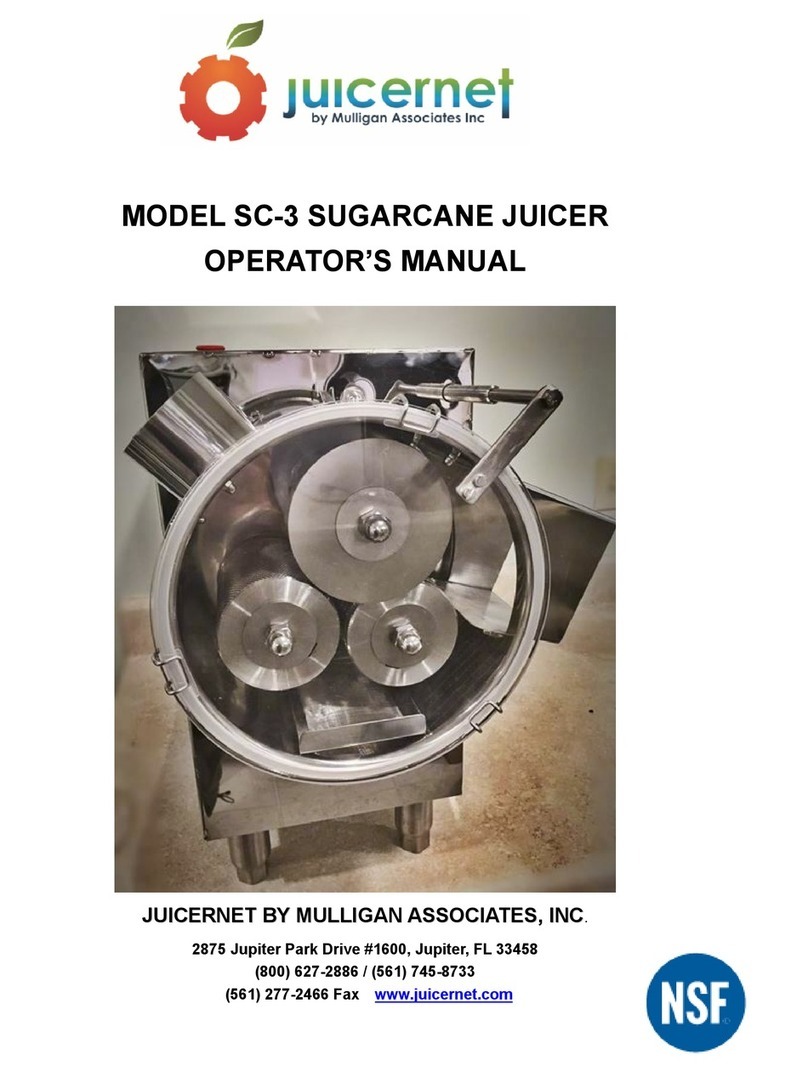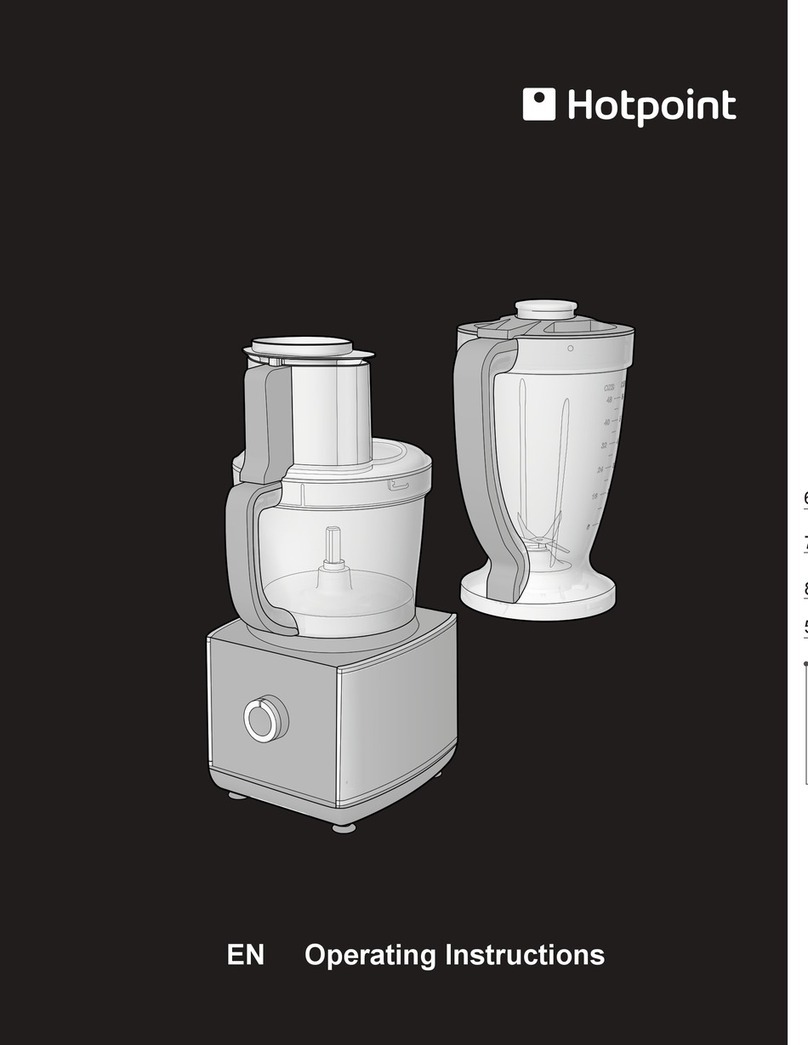DIHL KA-JC02 Series User manual

Juicer
KA-JC02 Series
USER GUIDE
Contents
Introduction
Parts Included
Important Safeguards
Using the Appliance
Cleaning
Technical Specifications
Environmental Info and Support

A.
B.
C.
D.
E.
F.
G.
H.
I.
J.
K.
L.
Feed Tube
Feeder
Lid
Funnel
Juice Bowl
Outlet
Cover
Hoop
Pulp Tank
Cup
Main Body
On/Off Switch
Introduction
Congratulations on your new purchase and thank you for choosing Dihl.
To get the best out of your new appliance, please read this user guide carefully before using it for the
first time. We also recommend that you keep the instructions for future reference, so that you can
remind yourself of the functions of your appliance.
PARTS INCLUDED

Positioning the Apparatus
1.
2.
3.
4.
5.
6.
7.
8.
9.
10.
11.
12.
13.
14.
15
1.
2.
Incorrect use of this appliance may cause personal injury and damage.
Use for its intended purpose only. The manufacturer is not responsible for any injury or damage
resulting from incorrect use or handling (see also Guarantee Terms).
For connection to 220-240V, 50/60Hz.
For domestic use only. Not for outdoor or commercial use.
The motor section or cord of the appliance must not be submerged in water or any other liquid.
Do not operate with wet or damp hands. Make sure that no liquid gets into the motor section.
Never leave unattended when in use, and keep an eye on children.
Remove the plug from the socket before removing the lid from the appliance for cleaning, or
when not in use.
NEVER use your fingers, kitchen utensils or similar to push ingredients down the feed tube! Use
the accompanying tamper.
NEVER stick fingers or other objects into the spout.
NEVER touch the moving parts of the appliance until it has come to a complete stop.
The centrifuge bowl must be handled with care, as it contains extremely sharp parts.
Never use if the centrifuge bowl is damaged.
Do not leave the appliance running nonstop for more than 3 minutes at a time. If the appliance
has been running for 3 minutes, allow it to cool down for 7 minutes before you use it again.
This appliance is not intended for use by persons (including children) with reduced physical,
sensory or mental capabilities, or lack of experience and knowledge, unless they have been
given supervision or instruction concerning use of the appliance by a person responsible for their
safety.
Always place the appliance at the back of the kitchen counter.
Do not place next to hot areas, for example gas rings and electric hotplates.
Cord, Plug and Mains Socket
1.
2.
3.
4.
5.
6.
Ensure that the cord is fully extended.
Do not allow the cord to hang over the edge of a table/counter, and keep it away from hot objects
and naked flames.
Check regularly that neither cord nor plug is damaged and do not use if they are, or if the appliance
has been dropped or damaged in any other way.
If the apparatus or plug is damaged, it must be inspected and if necessary, repaired by an authorized
repair engineer, otherwise there is a risk of electric shock. Never try to repair the appliance yourself.
Avoid pulling the cord when removing the plug from the socket. Instead, hold the plug.
Check that it is not possible to pull or trip over the cord or any extension cord.
Caution
IMPORTANT SAFEGUARDS

1.
2.
While preparing the juicer for use, ensure that it is switched off and unplugged at the mains.
Before using, clean and the parts thoroughly.
1.
2.
3.
4.
5.
6.
Put the juice bowl (E) onto the main body (K). See Fig 1.
Put the funnel (D) onto the juice bowl (E) and make sure it clicks into place. See Fig 2.
Place the lid (C) on the main body (K) and make sure it clicks into place. See Fig 3 and 4.
Pull the hoop (H) onto the lid (C) to lock the lid in place. If the hoop does not lock, the unit will not work.
See Fig 4 and 5.
Place the pulp tank (I) under the lid (C) and lock into place. If the tank does not fit properly, the pulp
will flow out of the tank. See Fig 6.
Put the cover (G) onto the cup (J) and place the cup underneath the outlet. See Fig 7 and 8.
Preparing Fruits and Vegetables for Juicing
1.
2.
3.
4.
5.
Always wash fruits and vegetables thoroughly before juicing.
It is not necessary to remove seeds, pits or thin peels before using the appliance.
Fruits with thick peels such as oranges and lemons must be peeled before juicing. It is particularly
important to remove all the peel (including the pith), as even small amounts of peel can impart an
unpleasant taste to the juice.
It is also necessary to remove large pits (such as plum and apricot pits) to avoid damaging the
appliance.
Large fruits and vegetables should be cut into pieces that can fit into the funnel.
USING THE APPLIANCE
Preparing for use
1 2 3 4 5 6
7 8
Do not run the appliance more than 2 minutes at a time.
Keep hands away from the feed tube while the appliance is running to avoid major injury.

Use
1.
1a.
1b.
2.
3.
4.
Switch on the appliance. There are two settings; "1" (low speed) or position "2" (high speed).
The low speed setting is suitable for juicing soft fruits and vegetables.
The high speed setting is suitable for juicing harder fruits and vegetables.
Sart to add the fruit and veg of your choice to the feeder (B). The juice will start to come out of the
outlet (F).
If the contents start to get stuck, use the feeder tube to push the fruit into the juicer. See Fig 9 and 10.
Once finished, switch the dial back to ‘0’. See Fig 11. Release the hoop. See Fig 12.
Tip
Cleaning
1.
2.
3.
4.
5.
6.
7.
8.
1.
2.
3.
4.
5.
6.
If you line the fruit pulp holder with a plastic bag before use, it will be easier to clean the appliance.
Use fresh fruits and vegetables – they contain the most juice.
Good candidates for juicing include pineapple, apples, cucumbers, celery, carrots, spinach, melons,
tomatoes and most citrus fruits.
The various varieties of apple yield juice with different flavors and consistency. Experiment with different
combinations to find your own favourite.
Leafy green vegetables such as cabbage and spinach can be juiced. Roll the leaves into cylinders of an
appropriate size before feeding them into the funnel.
Fibrous fruits and vegetables as well as those with very firm flesh such as bananas, mangoes, papayas
and avocadoes are not well-suited to juicing, as the result is often mashed fruit instead of juice.
All types of juice should be consumed right after juicing, as fresh juice quickly loses important nutrients
when exposed to the oxygen in the air. Taste can also be affected.
Pure apple juice turns brown quickly when exposed to air. To prevent discoloration, serve apple juice
immediately after juicing or add a little lemon juice.
Remember that fruit pulp can be used in cakes, vegetable lasagne, muffins, etc.
Remove the plug from the wall socket and allow the apparatus to cool down before cleaning.
The best way to clean the main body is with a slightly dampened cloth and, if necessary, a little
detergent. Do NOT immerse the main body section in any form of liquid!
The detachable parts can be washed up by hand or in a dishwasher.
Be careful not to touch the sharp parts in the bottom of the centrifuge bowl.
Do not use any kind of strong or abrasive cleaning agent on the appliance or its accessories. Never
use a scouring sponge or similar to clean it, as the surface may be damaged.
Allow all parts of the appliance to dry completely before reassembling it after cleaning.
910 11 12

This means that this product must not be disposed of together with ordinary household waste, as
electrical and electronic waste must be disposed of separately.
In accordance with the WEEE directive, every member state must ensure the correct collection,
recovery, handling and recycling of electrical and electronic waste. Private households in the EU can
take used equipment to special recycling stations free of charge. In certain member states, used
apparatus can be returned to the dealer where they were bought on the condition you buy new
products. Contact your retailer, distributor or the municipal authorities for further information on what you
should do with electrical and electronic waste.
Environment
Support
Please note that this product is marked with this symbol:
To view our entire product range, visit
www.dihl.co.uk
value
quality
no compromise
Storage
1.
2.
Ensure the appliance is clean and dry before
storing.
The appliance contains sharp parts - keep out
of the reach of children.
KA-JC02
600W
Centrifugal Juicer
240V
2.2KG
Weight
Model
Product Name
Voltage
Rated Power
TECHNICAL SPECIFICATIONS
Table of contents
